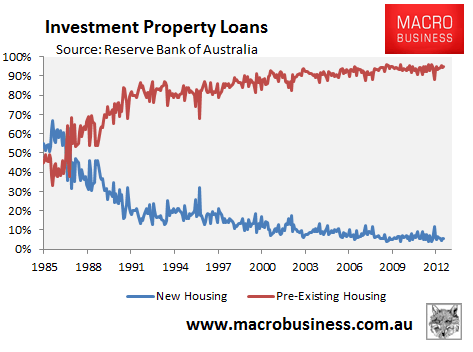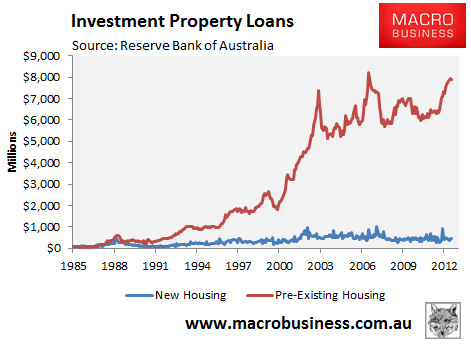Repeat a lie often enough and it becomes true. This appears to be the approach taken by the Real Estate Institute of Australia (REIA), which has issued yet another media release warning the Government not to “meddle” with negative gearing, claiming that it would lead to rental shortgages and push-up rents:
The Real Estate of Australia (REIA) says it agrees with the new Grattan Institute Renovating Housing Policy report that a major overhaul of housing policy in Australia is needed, but differs in what needs to be done.
REIA President Peter Bushby says, “We strongly agree with the report’s recommendations to eliminate stamp duties, however it’s essential negative gearing be retained in its current form for the purpose of property investment.”
“REIA has always supported negative gearing because it helps in the provision of rental accommodation. Negative gearing for property investment is complementary to the goals of the Government’s Housing Affordability Fund (HAF) in addressing the supply of rental accommodation.”
“To remove it would show that we haven’t learnt anything from history. When negative gearing was abolished in 1985 it had disastrous consequences for the property market and for people trying to rent. Rents rose 37% across Australia and by 57% in Sydney. Thankfully, negative gearing was reinstated in 1987”…
“The myth that negative gearing is a plaything of the wealthy also needs to dispelled. The majority of taxpayers with a negatively geared property earn less than $80,000 a year.”
Once again, let’s use something called “evidence” to debunk each of the REIA’s claims regarding negative gearing, starting with this one:
Advertisement
REIA has always supported negative gearing because it helps in the provision of rental accommodation. Negative gearing for property investment is complementary to the goals of the Government’s Housing Affordability Fund (HAF) in addressing the supply of rental accommodation.
This claim is clearly false. Reserve Bank of Australia (RBA) data clearly shows that the overwhelming majority of investors - over 90% - buy pre-existing dwellings, not new dwellings, and that the proportion of investors buying new dwellings has fallen spectacularly since negative gearing was re-introduced in September 1987 (see next chart).

Moreover, the amount of investor funds going into new housing has barely shifted in 25 years:

Because investors primarily purchase pre-existing dwellings, negative gearing in its current form simply substitutes homes for sale into homes for let. As such, negative gearing has done little to boost the overall supply of housing or improve rental supply or rental affordability.
Advertisement
In the event that negative gearing was once again quarantined and a proportion of investment properties were sold, who does the REIA think they would sell to? That’s right, renters. In turn, those renters would be turned into owner-occupiers, thereby reducing the demand for rental properties, leaving the rental supply-demand balance unchanged.
Now, let’s examine the REIA’s next claim:
To remove it would show that we haven’t learnt anything from history. When negative gearing was abolished in 1985 it had disastrous consequences for the property market and for people trying to rent. Rents rose 37% across Australia and by 57% in Sydney. Thankfully, negative gearing was reinstated in 1987…
Discuss in our Forums
See what other readers are saying about this article!
Click here to read & post comments.
13 posts so far.